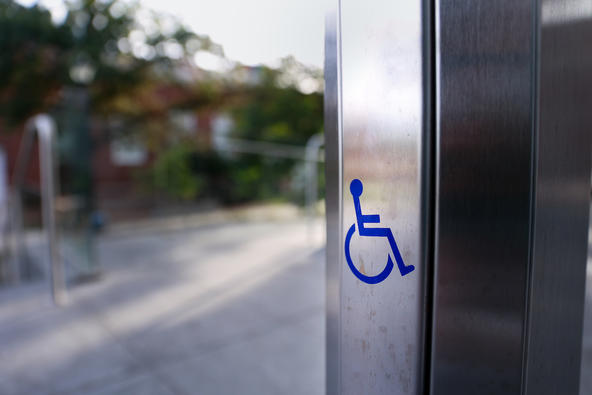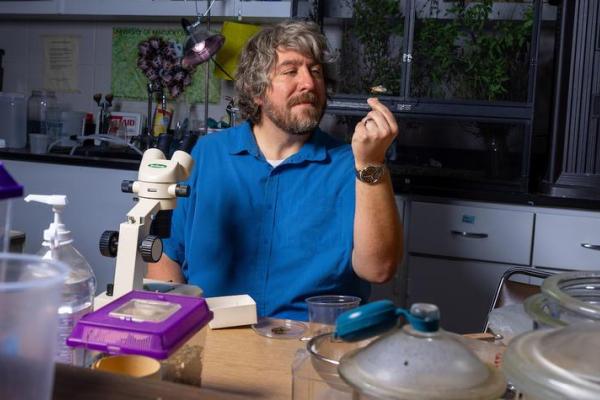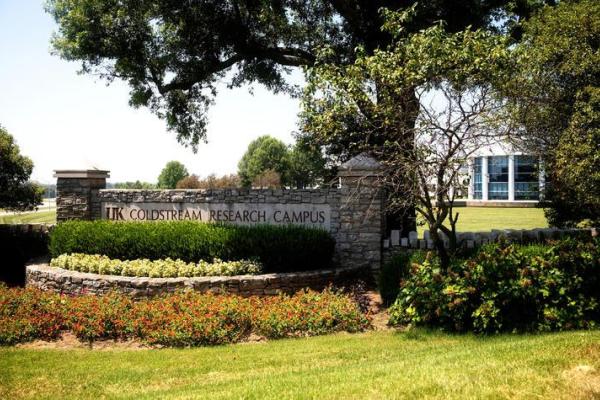OneUKforAll: Creating Accessibility on Campus

At the University of Kentucky, we are one community — a family comprised of many individuals whose differences are celebrated and understood.
While UK is determined to continue building upon its mission of teaching, service, research and healing, we can only accomplish those goals when we take care of our people.
This new UKNow series, “Many People Creating One Accessible Community,” is a call to action. Over the coming weeks and months, we will highlight ways we can step up to ensure our campus is welcoming for all.
This week, the series will focus on campus accessibility.
“Sometimes we take accessibility for granted,” said David Beach, director of the Disability Resource Center (DRC), housed in the UK Office for Student Success. “When we create barriers for individuals with disabilities, or any population, we are essentially communicating that we do not value their presence in our community. If individuals with disabilities do not feel valued, they may feel marginalized and alone, which can impact their mental health and their sense of belonging in a negative manner, which can have drastic long-term effects on both the individual and the community.”
Here’s how you can keep UK accessible to all:
-
Keep entrances, hallways and doorways clear from obstruction.
-
Don’t impair access to accessible door tap pads by attaching bikes, scooters, etc. Make sure all accessible entrances are clearly marked.
-
When holding events, include instructions for students to request accommodations in all marketing materials.
-
Hold events in areas that are near an accessible entrance, have access to an accessible restroom, are well lit and offer wheelchair access to various parts of the seating areas.
-
Keep accessible ramps clean and free of impediments.
-
Do not park in accessible parking spaces, even if you are only going to be there for a few minutes. Also, do not park in the lined area between accessible spaces. Those areas are for the deployment of wheelchair lifts from the vehicles in the accessible spaces and if the doors are blocked the individual cannot access their vehicle.
-
Keep sidewalks and curb cuts clear of bikes, scooters, etc., as these can create a barrier for persons with mobility or visual impairments.
“For those of us that work in fields related to disability our goal has been full inclusion for all individuals, regardless of their abilities,” Beach said. “History has shown that vibrant communities thrive on diverse populations, and we feel that persons with disabilities can contribute in many positive ways. The responsibility then lies on the people to create opportunities for inclusion in designing both accessible and thoughtful physical and psychosocial spaces. It is incumbent on this university to set the example for the Commonwealth and society in such a way that it spills out all over Kentucky.”
Together — and only together — can we be the University of, for and with Kentucky.
To follow along with the “Many People Creating One Accessible Community” series, search #OneUKforAll on UK’s Facebook and Twitter. For more information on the DRC, visit its website. To discover what’s wildly possible at the University of Kentucky, click here.
More from this series Research Priorities - Diversity & Inclusion
Credits
Ryan Girves (Public Relations & Strategic Communication)



